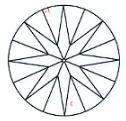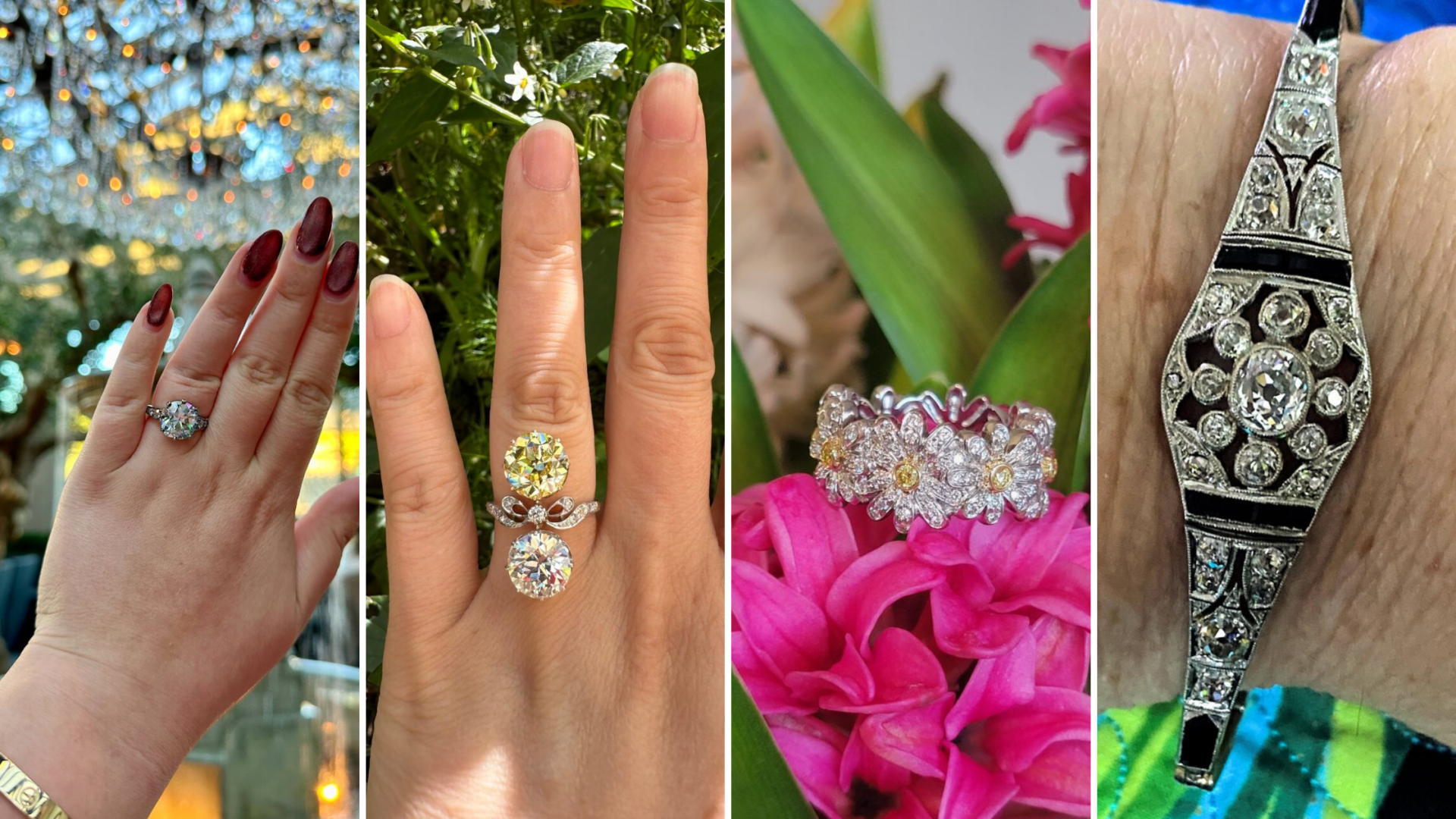Hi,
I''m fairly new to this site, but have been following some of the threads for a couple of weeks. Have to say that I think it''s a great site and found it to be a fantastic source of info. Wondering if any of the experts can help me out.
I''m looking at a diamond which is a RBC, XXX, EVS2
table = 55%, depth = 62.2%, crown angle = 35, pavilion angle = 40.8
It''s laser inscribed with GIA cert.
From the top view, the cert. only shows minor inclusions. From the pavilion view there is 2 feathers shown. The feathers are on the outer edges of the diamond. I''ve attached an image.
The problem I have is that I can acutally see the feather with the naked eye (When I look at it closely from the side view of the pavilion. Looks like a tiny black dot). When I turn it around, the dot is reflected on more than one facet of the pavilion. (sorry if my terminology is not correct)
Is this what is referred to as a reflector inclusion ? What is the acutual definition of a reflector inclusion ? I can''t see the inclusion from the top view of the diamond, even with a 10x lens, but obviously can see it when I examine it cutlet side up. (thought that a reflector can be seen from the top view as well ? is that correct ??)
The jewelry tells me that it shouldn''t affect the look of the stone, and that they will try and hide the feather under the prong setting (getting a 4 prong setting).
Can the experts tell me wheather this is true ? Will it interfer with the brilliance/light of the stone ? Why does GIA grading still grade it as a VS2, if you can see the it with the naked eye. Question to the GIA gemologists, shouldn''t GIA mention on their certificates that there is a type of reflector inclusions ?
I would think that mentioning these types of detail on the cert. would give consumers more of an idea on what they''re buying. Expecially if all they have to go on is the GIA certificate.
Am I''m being picky, or is what I''m seeing not referred to as a reflector inclusion ? I''m not 100% happy with it, but unfortunately I already paid a deposit on the diamond. Thinking weather I should just not take the risk and maybe forget about my deposit.


My main concern is also weather the stone will be prone to chipping in the future if the feather is at the edge. If I can see the feather with my naked eye does it mean it''s a really big feather ?
The plotting on the cert didn''t look big to me which was why I chose the stone in the end. And I definitely never expected to see anything with my naked eye !!

I''m fairly new to this site, but have been following some of the threads for a couple of weeks. Have to say that I think it''s a great site and found it to be a fantastic source of info. Wondering if any of the experts can help me out.
I''m looking at a diamond which is a RBC, XXX, EVS2
table = 55%, depth = 62.2%, crown angle = 35, pavilion angle = 40.8
It''s laser inscribed with GIA cert.
From the top view, the cert. only shows minor inclusions. From the pavilion view there is 2 feathers shown. The feathers are on the outer edges of the diamond. I''ve attached an image.
The problem I have is that I can acutally see the feather with the naked eye (When I look at it closely from the side view of the pavilion. Looks like a tiny black dot). When I turn it around, the dot is reflected on more than one facet of the pavilion. (sorry if my terminology is not correct)
Is this what is referred to as a reflector inclusion ? What is the acutual definition of a reflector inclusion ? I can''t see the inclusion from the top view of the diamond, even with a 10x lens, but obviously can see it when I examine it cutlet side up. (thought that a reflector can be seen from the top view as well ? is that correct ??)
The jewelry tells me that it shouldn''t affect the look of the stone, and that they will try and hide the feather under the prong setting (getting a 4 prong setting).
Can the experts tell me wheather this is true ? Will it interfer with the brilliance/light of the stone ? Why does GIA grading still grade it as a VS2, if you can see the it with the naked eye. Question to the GIA gemologists, shouldn''t GIA mention on their certificates that there is a type of reflector inclusions ?
I would think that mentioning these types of detail on the cert. would give consumers more of an idea on what they''re buying. Expecially if all they have to go on is the GIA certificate.
Am I''m being picky, or is what I''m seeing not referred to as a reflector inclusion ? I''m not 100% happy with it, but unfortunately I already paid a deposit on the diamond. Thinking weather I should just not take the risk and maybe forget about my deposit.


My main concern is also weather the stone will be prone to chipping in the future if the feather is at the edge. If I can see the feather with my naked eye does it mean it''s a really big feather ?
The plotting on the cert didn''t look big to me which was why I chose the stone in the end. And I definitely never expected to see anything with my naked eye !!
Any advice would be greatly appreciated. (sorry for the lengthy thread) Thanks heaps !!!






300x240.png)